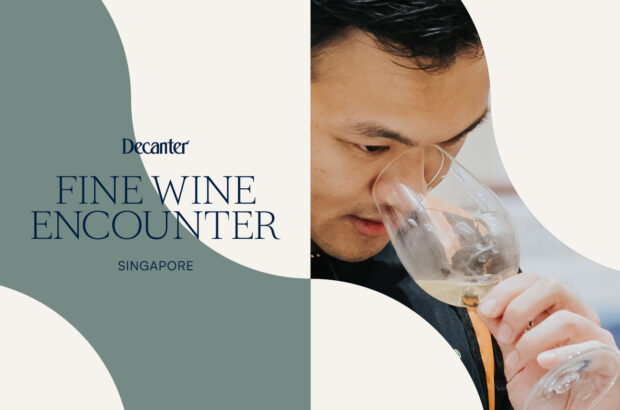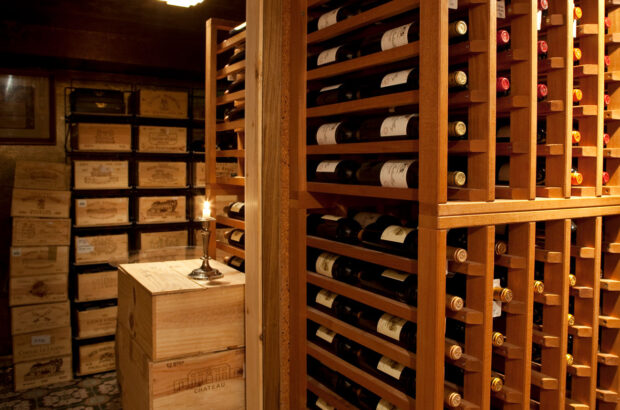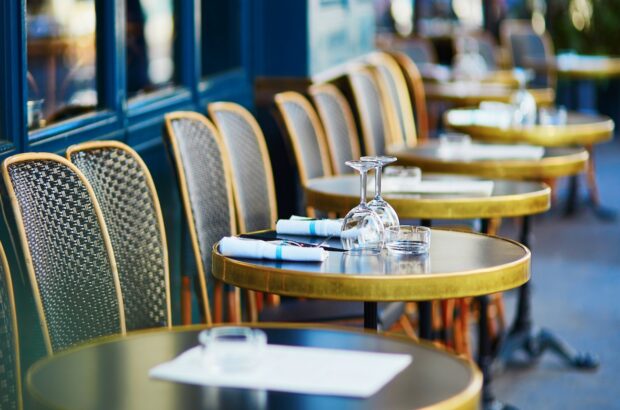In March 2013 James L Barrett, the founder of Napa Valley’s Chateau Montelena, died at the age of 86. His son Bo, who has been the winemaker since 1982 and is now CEO, talked to Courtney Humiston for Decanter.com over the course of two lengthy interviews, once in December 2012 and one shortly after his father’s death, about founding the historic property, the evolving style of California Chardonnay – and the professional and family tensions that nearly led to Montelena being sold to Cos d’Estournel.
What were those first years like at Chateau Montelena?
We got here in 1972 and the vineyard had been reunited with the Chateau but the Chateau had been abandoned since 1939. We had to buy everything. There were no tanks, no barrels; it was a dirt floor. We had to build the first modern winery in 1972 and we had to replant everything.
The vines had been neglected and were rundown. In the 1930s they grew stuff they could ship to the East Coast and then they grew stuff the co-ops wanted to sell to Gallo. It was the age of industrial winemaking, and the estate was planted to heavy-bodied blending grapes like Alicante Bouschet, Petite Sirah, Grenache, Carignan. Here they were not really high-quality grapes, they were just for bulk wine. So we bought in Chardonnay and Riesling, and then we started planting Cabernet Sauvignon.
What do you think is your father’s most important legacy?
That he was best at was helping people grow. He was a tough guy but a nurturing boss. He was a fearless leader of the team of Chateau Montelena. He was a good organizer and a good leader—he taught me to do things bigger than myself.
For example writing the petition for Calistoga to be an official sub-AVA of Napa Valley?
He let me run with that. We didn’t really need it but it was important for our neighbours—they needed a commune. It was an extension of what he was doing with the Napa Valley Vintners, the Family Winemakers [Jim Barrett was president of both], affordable housing, you name it. I’ve always been brainwashed by my dad into this leadership role. Because of the Paris Tasting, We’ve always had a little bit of a leadership role in our Calistoga AVA and by extension Napa.
And yet your family wasn’t really a farming or winemaking family?
Our exposure to wine is not multi-generational. My father learned about wine because his clients started taking him to dinner in LA once he became successful, and he learned about wine at an extension class at UCLA – and in 1970, of course, the only wines they taught at UCLA were European. So they looked at Riesling from the Rheingau , then they looked at White Burgundy and Red Burgundy then they looked at Cabernet, which was Bordeaux. When he came up with the idea of starting a wine company he wanted to make a white Burgundy because that was the best white wine out of Europe he had been exposed to and of course the best red wine was Cabernet. And because Calistoga was a warmer area [than Burgundy or Germany] he set out to make a Bordeaux first growth here in Calistoga.
My dad wasn’t really a farmer or an agronomist; he was a team builder. He hired the right people and let them do their job.
One of those people was Mike Grgich, the winemaker who made the 1973 Montelena Chardonnay. A lot is made of the Paris Tasting—is it really as important as we think?
That was played up louder than it ever was. We just wanted to get in the same league…to be allowed on the field. And now we are. And by extension, if the Californians can do it, then the Aussies can do it and the Kiwis or whoever.
Would the California wine industry be where it is if it weren’t for the Paris Tasting?
Probably. It was how Napa Valley came to lead the fine wine revolution of the United States. Would it have happened by itself? Probably, because the weather is just too good here.
Would it have happened instantly like it did in 1976? No. It probably would have taken another 20 years.
In the history of the Chateau Montelena, it was a pivotal moment because it allowed us to get the Cabernet planted. My dad’s dream was to make a Bordeaux first growth and the success of the Chardonnay allowed us to do that.
In 2008, you very nearly sold Chateau Montelena to a French company. What was happening at that time?
In 2008 I became the master winemaker and I had to do a lot more of my dad’s job. I was running the outfit, but my dad was still very much in charge.
I only owned a tiny fraction—I still do— and my siblings weren’t involved. What happened in 2008 was for safe planning purposes. They [the Reybier family of St Estephe 2nd Growth Cos d’Estournel] offered me a pile of money [reported on Decanter.com as in the region of US$110m].
We are happy the deal fell through. It allowed my father to let go and for me to build a new team. We needed a new cellar. We were asking him to plant a new vineyard. That’s a lot to ask of an 80-year-old man.
What has changed since that almost-sale?
It was the best thing that could have happened. The last years have been so much fun. We’ve been replanting, and building [a major renovation of the cellar was finished in 2011]. My dad’s been looking forward, not back. We ran as a monarchy and since then we have been running as a solid republic.
The other thing that Chateau Montelena is closely associated with — and which happened in the same year — is the movie Bottle Shock. How influential has that movie been?
We are at the [north] end of Napa Valley—we are the last winery you get to. Which means that through 2008 people who came here were already familiar with the wines. The only visitors we had were experienced and wine-sophisticated. Bottle Shock introduced us to people who had never visited a winery before. ‘Hey, I’m from Iowa and I want to check this out.’ We had to change our parking lot.
Being a celebrity, being recognised, takes some getting used to. I’m a pretty private guy. The cult of the winemaker was started by Robert Mondavi as early as the 1960s and 70s—being recognised as a star winemaker. I think what helps me is my wife Heidi [Barrett, the renowned California consultant] is even more recognisable for her own accomplishments. I think most of my recognition is still from my work.
How has the style of Chardonnay changed since 1973?
This is a classic house. We haven’t gone from my father’s original vision which is traditional styling with California flavours. By ‘traditional’ I mean the European style – which has basically higher acid. All of our wines have a European model that they emulate. People are getting into this whole terroir business but we were doing that a long time ago: we just didn’t have a name for it.
Was it difficult not to be making the big, fruit-forward style of California Chardonnay that was so wildly popular for so long?
For a long time we were paddling uphill. Our wine was hard to sell because everyone was drinking the soft style. But we knew it was the right thing to do in the long run because it was such a good wine. The reason it won the Paris Tasting is because it worked. It’s supposed to taste like a white Burgundy and it still does.
We are really pretty stubborn. When the soft Chardonnay style was invented around 1982, it really took off with the Kendall-Jackson style. They did the malolactic, got a lot of wood in there and a lot of sugar too. We stuck to our guns and made this style of Chardonnay, the tart, lean, crisp – and ageable – style.
Is the average American coming around to the Chateau Montelena style?
The tide has definitely turned. We did some of the more modern Burgundian stuff like whole cluster presses and so on. We thought, we’re going to stick to our guns philosophically, but improve our fruit handling to make our wine even better. And that worked spectacularly. By the time the Chardonnay drinkers matured enough to start looking for this kind of style we had the right wine. The wines we make now are actually superior to the wines we made in 1973.
So the stylistic pendulum is swinging back?
Yes. And the main reason is that Chardonnay is pretty tasty. Chardonnay for a long time had a dreary sameness. Everyone was using the same oak, the same malolactic culture, the same yeast. All you really have are the grapes to differentiate the great wines from the standard wines.
Written by Courtney Humiston in Sonoma






